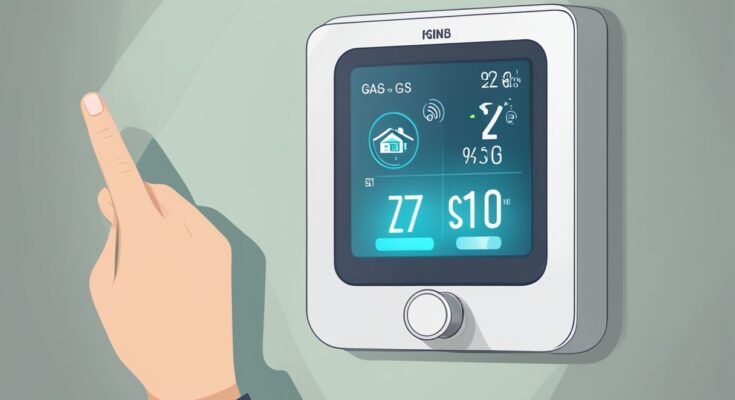As energy costs fluctuate, finding effective ways to cut down your gas bill becomes increasingly vital. You don’t need to compromise on comfort to achieve significant savings. By adjusting just a few habits around the house, like managing your thermostat settings and optimizing your insulation, you can see a noticeable decrease in your monthly expenses.
Consider the impact of these simple yet effective changes. Upgrading to a smart thermostat or wearing warmer clothing indoors are straightforward adjustments that can reduce wasteful energy use. Additionally, lowering the water heater temperature and strategically using ceiling fans can contribute further to keeping costs down.
Staying informed about practical techniques to lower energy usage not only saves money but also promotes a more sustainable lifestyle. Understanding how to reduce sewer bill or any other bill by implementing these methods empowers you to have better control over your household expenses.
Table of contents
Key Takeaways
- Manage thermostat and insulation for savings.
- Simple changes reduce energy use effectively.
- Stay informed for sustainable cost control.
Check Your Insulation
Ensuring efficient insulation in your home is crucial to lowering your gas bill. Proper insulation keeps warm air inside during winter, reducing the need for constant heating.
Start by inspecting the attic, as it is a common area for heat loss. Look for uneven or thin layers and add more insulation if necessary.
Walls, floors, and basements are also important. Pipe insulation can prevent heat loss from hot water lines. Use pipe sleeves or wraps designed for insulating purposes.
Seal any gaps around doors and windows with weatherstripping or caulk. This prevents drafts and maintains indoor temperature more effectively.
Consider the following insulation materials:
| Material | Benefit |
|---|---|
| Fiberglass | Affordable and easy to install |
| Spray Foam | Fills cracks and hard-to-reach areas |
| Cellulose | Environmentally friendly |
Regularly inspecting your home’s insulation can significantly influence energy efficiency. Focus on areas where warmth may be escaping and address these to maintain a comfortable environment.
By maintaining and enhancing your insulation, you can better control the indoor temperature, potentially saving money on your energy bill.
Turn Down The Thermostat
Lowering your thermostat by a few degrees can significantly reduce your gas bill. For each degree you lower, you might save up to 1% on your energy costs. Try adjusting it down when you are asleep or away from home.
Consider using a programmable thermostat. This allows you to automatically set temperature reductions during the night or when no one is home. It’s a convenient way to ensure you’re saving energy without manual intervention.
A common recommendation is setting the thermostat to 68°F (20°C) while you’re awake and at home, and lowering it when you are asleep or away. This simple adjustment can make a noticeable difference in your heating costs.
Tips for effective use:
- Dress in layers to stay warm when indoors.
- Use rugs and curtains to add insulation to rooms.
- Ensure doors and windows are fully closed to avoid heat loss.
Taking these steps can create a more efficient household, leading to cost savings and increased comfort.
Get A Smart Thermostat
Installing a smart thermostat can be an effective way to lower your gas bill. These devices help regulate your home’s temperature efficiently by learning your schedule and adjusting settings accordingly. This minimizes energy waste and can lead to significant savings.
Advantages:
- Energy Efficiency: Smart thermostats optimize heating based on your habits, reducing unnecessary energy use.
- Convenience: You can control the thermostat remotely via a smartphone app, allowing adjustments on the go.
- Alerts and Insights: Many models provide insights into your energy consumption and alert you about maintenance needs.
Comparison of Popular Models:
| Brand | Features | Average Cost |
|---|---|---|
| Nest | Learns schedule, app control | $250 |
| Ecobee | Voice control, room sensors | $200 |
| Honeywell | Energy reports, flexible scheduling | $150 |
Installation Tips:
- Compatibility Check: Ensure the thermostat is compatible with your HVAC system.
- Wi-Fi Connection: A stable internet connection enhances remote control capabilities.
- Professional Installation: Opt for a professional installation to ensure proper setup for optimal efficiency.
Adjusting settings like lowering the temperature while you’re away can lead to even more savings. With a smart thermostat, you can maintain comfort without manually adjusting the settings daily.
Wear Warmer Clothing
Reducing your gas bill can be as simple as adjusting your wardrobe. Layering clothing effectively helps maintain body warmth without turning up the thermostat.
Wear thermal underwear to keep your core insulated. This can be worn comfortably under regular clothing without adding bulk. Pairing sweaters or long-sleeved shirts with your outfit can add warmth while remaining stylish.
Consider wool or fleece materials for retaining heat. Wool has natural insulating properties, and fleece is lightweight yet cozy. Look for socks made from these materials to keep your feet warm on colder days.
At home, wearing slippers or house shoes also helps. Not only do they keep your feet warm, but they also provide additional comfort and protection on chilly floors.
Try scarves, hats, and gloves indoors if it gets particularly cold. These accessories work well to trap heat and can be easily removed if you get too warm.
Creating a designated warm zone in your living space, where you can add extra blankets or throws, offers an additional way to stay comfortable without increasing heating costs.
By choosing appropriate clothing, you can effectively stay warm and reduce the dependency on heating systems, thereby contributing to lower gas bills.
Lower Your Water Heater Temperature
Reducing the temperature setting on your water heater is an effective way to cut down on your gas bill. The standard temperature setting is often around 140°F. Lowering it to 120°F can result in noticeable savings without compromising comfort.
Benefits:
- Savings: Every 10°F reduction can save about 3% to 5% on energy costs.
- Safety: Reduces the risk of scalding, making it safer for children and the elderly.
- Extended Equipment Life: Less heat stress on the heater can prolong its lifespan.
Adjusting the Temperature:
- Locate the Thermostat: Most water heaters have a visible temperature dial.
- Set to 120°F: Turn the dial to the desired temperature.
- Wait and Test: Allow a few hours, then check the water temperature at a faucet.
Considerations:
- Always refer to the manufacturer’s manual for specific instructions.
- Some models have a dual thermostat for upper and lower heating elements. Balance both for consistent temperatures.
- After adjusting, periodically check to ensure the setting remains accurate.
Implementing this simple change can lead to reduced energy consumption and lower gas bills while maintaining a comfortable water temperature in your home.
Cook Smarter
Optimize your cooking methods to reduce your gas consumption. Consider using microwaves or toaster ovens for smaller meals. These appliances often use less energy compared to a full-sized gas oven.
Batch cooking can be an efficient technique. Prepare multiple meals at once to make the most of the heat generated. Store the extra meals for later use.
When using pots and pans on the stove, make sure they are properly covered. This reduces cooking time and keeps heat from escaping, lowering gas usage.
Using the right-sized burner for your pan can also make a difference. Small pans on large burners waste energy. Ensure a snug fit to increase efficiency.
Pressure cookers and slow cookers can be efficient, too. They use less energy over time and are great for tenderizing tougher cuts of meat.
Always maintain your equipment. Clean burners ensure even and consistent flames, which can reduce cooking time. Regular maintenance helps avoid gas leaks and enhances performance.
Don’t forget to preheat your oven only when necessary. This can significantly cut down on wasted energy. Consider if the dish truly requires it before starting your cooking.
Incorporate these tips into your routine to manage your gas usage effectively while preparing meals.
Change The Rotation Of Your Ceiling Fans
Adjusting the rotation of your ceiling fans can help reduce your heating costs. During colder months, set your ceiling fan to spin clockwise at a low speed. This creates an updraft, pushing the warm air that rises to the ceiling back down into your living space.
Look for a switch on your fan’s motor housing, often accessible without the need for tools. Turn off the fan first to ensure safety, then flip the switch to change the direction. Not all fans have this feature, so check your model’s manual if unsure.
This simple adjustment can enhance the efficiency of your heating system, allowing you to set your thermostat a few degrees lower. Each degree you lower your thermostat can lead to noticeable savings on your gas bill, without sacrificing comfort.
Bottom Line
Reducing your gas bill involves practical tips such as optimizing your home heating system, using appliances efficiently, and considering seasonal strategies. Making even a few of these adjustments can lead to noticeable reductions in your gas bill. Experiment and adjust tips based on your preferences and needs.
Frequently Asked Questions
During summer, use natural ventilation over air-conditioning whenever possible. Cooking outside using a grill instead of using the stove can reduce indoor heat, thus lowering cooling costs. Installing window films can block heat from entering, reducing the demand on cooling systems.
Heating systems, water heaters, and gas stoves are the primary consumers of natural gas. To manage their consumption, ensure proper maintenance and consider upgrading to energy-efficient models. Use timers on water heaters and make the most of natural light during the day.




